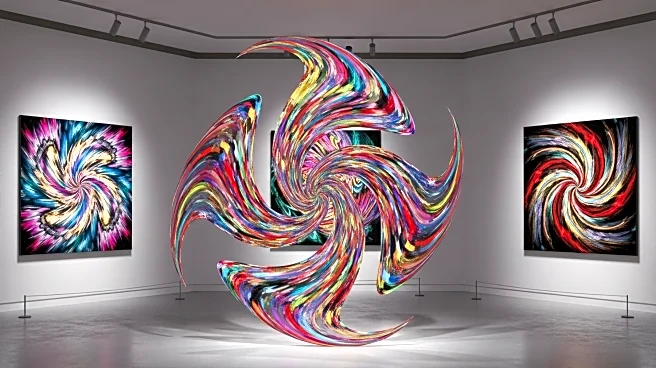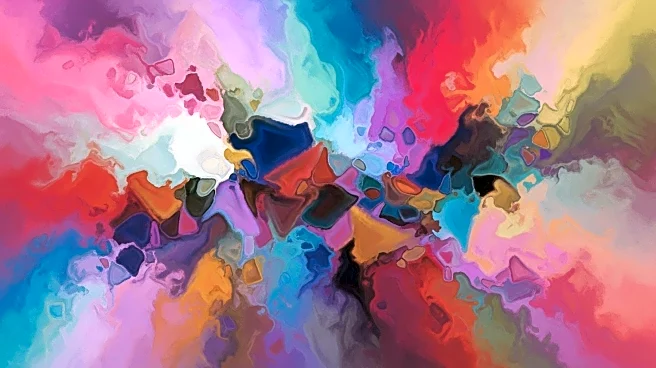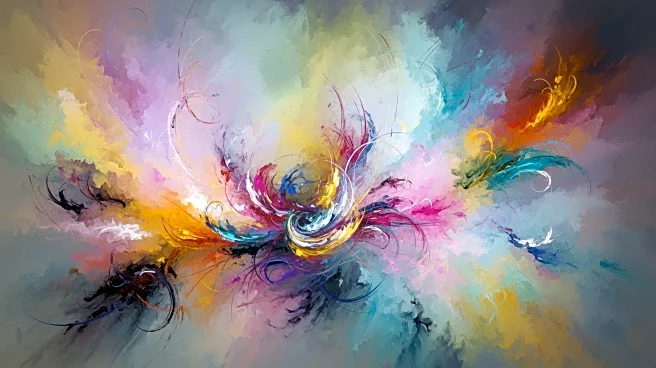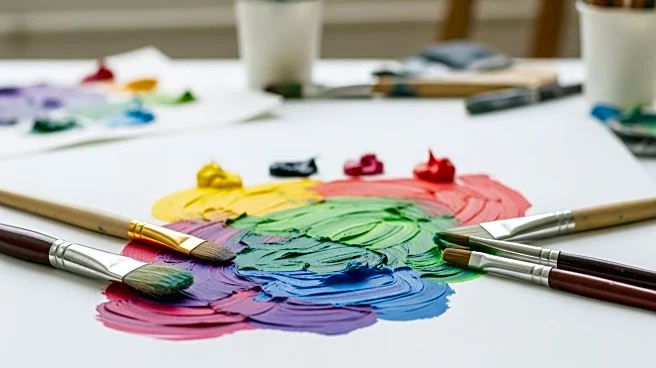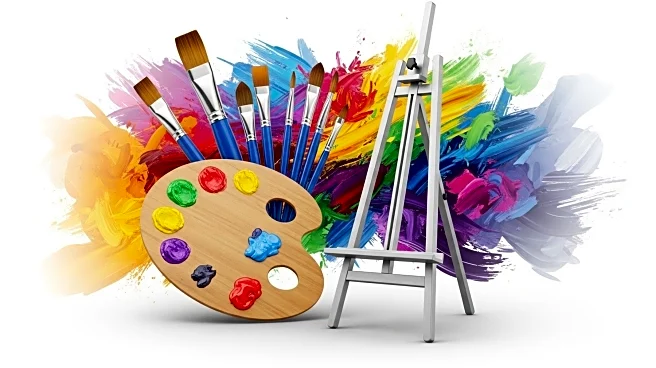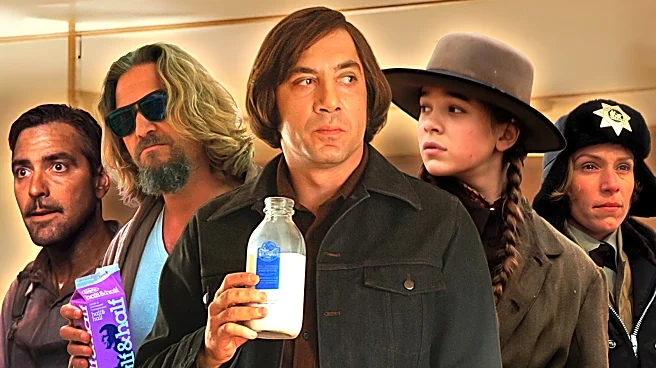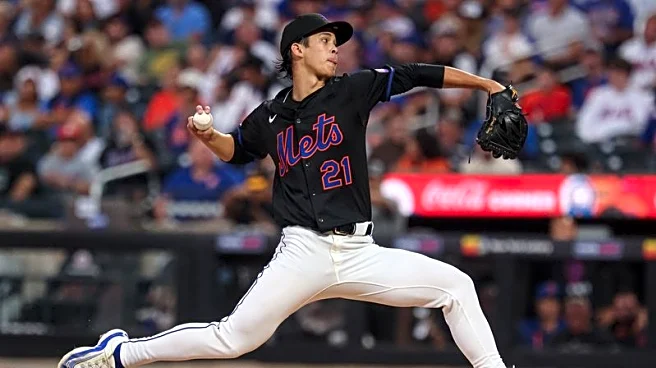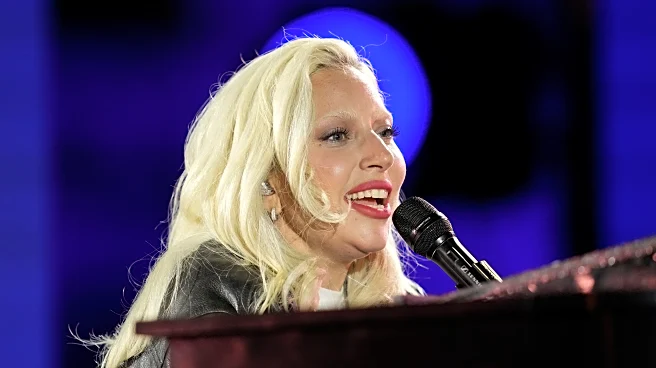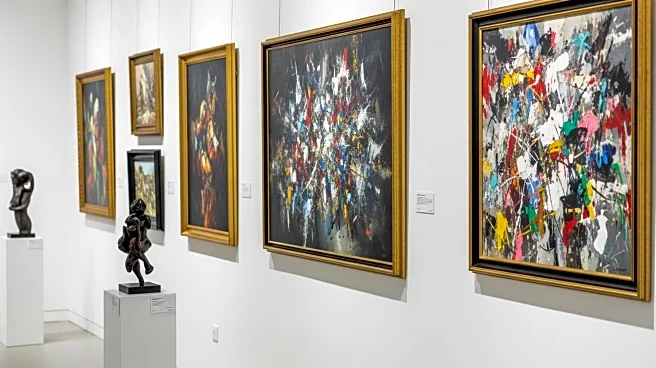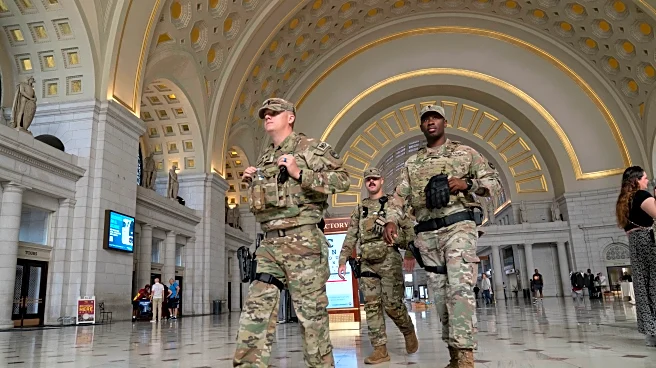What's Happening?
Flora Yukhnovich, a British artist known for her large-scale, gestural paintings, is showcasing her work at The Frick Collection in New York and Hauser & Wirth in Los Angeles. Her installations at The Frick Collection include wall coverings inspired by François Boucher's Four Seasons, designed to blend seamlessly with the gallery's architecture. Yukhnovich's work often incorporates elements of digital imagery, reflecting the modern experience of viewing art through screens. Her upcoming exhibition at Hauser & Wirth, titled 'Bacchanalia,' explores themes of digital chaos and the overwhelming nature of modern imagery, drawing inspiration from Roman architecture and French academic painting.
Why It's Important?
Yukhnovich's exhibitions highlight the intersection of historical art traditions and contemporary digital culture. By integrating digital elements into her work, she challenges traditional perceptions of art and encourages viewers to consider the impact of technology on artistic expression. Her installations at prestigious venues like The Frick Collection and Hauser & Wirth underscore her growing influence in the art world and her ability to engage audiences with thought-provoking themes. This approach not only enriches the cultural landscape but also prompts discussions about the evolving nature of art in the digital age.
What's Next?
Yukhnovich's exhibitions are set to run through early 2026, providing ample opportunity for art enthusiasts and critics to engage with her work. As her installations continue to attract attention, they may influence other artists to explore similar themes of digital integration and historical references. The success of these exhibitions could lead to further collaborations with major art institutions, expanding Yukhnovich's reach and impact within the art community.
Beyond the Headlines
Yukhnovich's work raises questions about the role of digital media in shaping our perception of art. By juxtaposing historical art references with modern digital aesthetics, she invites viewers to reflect on how technology alters our engagement with traditional art forms. This exploration of digital chaos and historical art may inspire broader discussions about the preservation of cultural heritage in an increasingly digital world.
